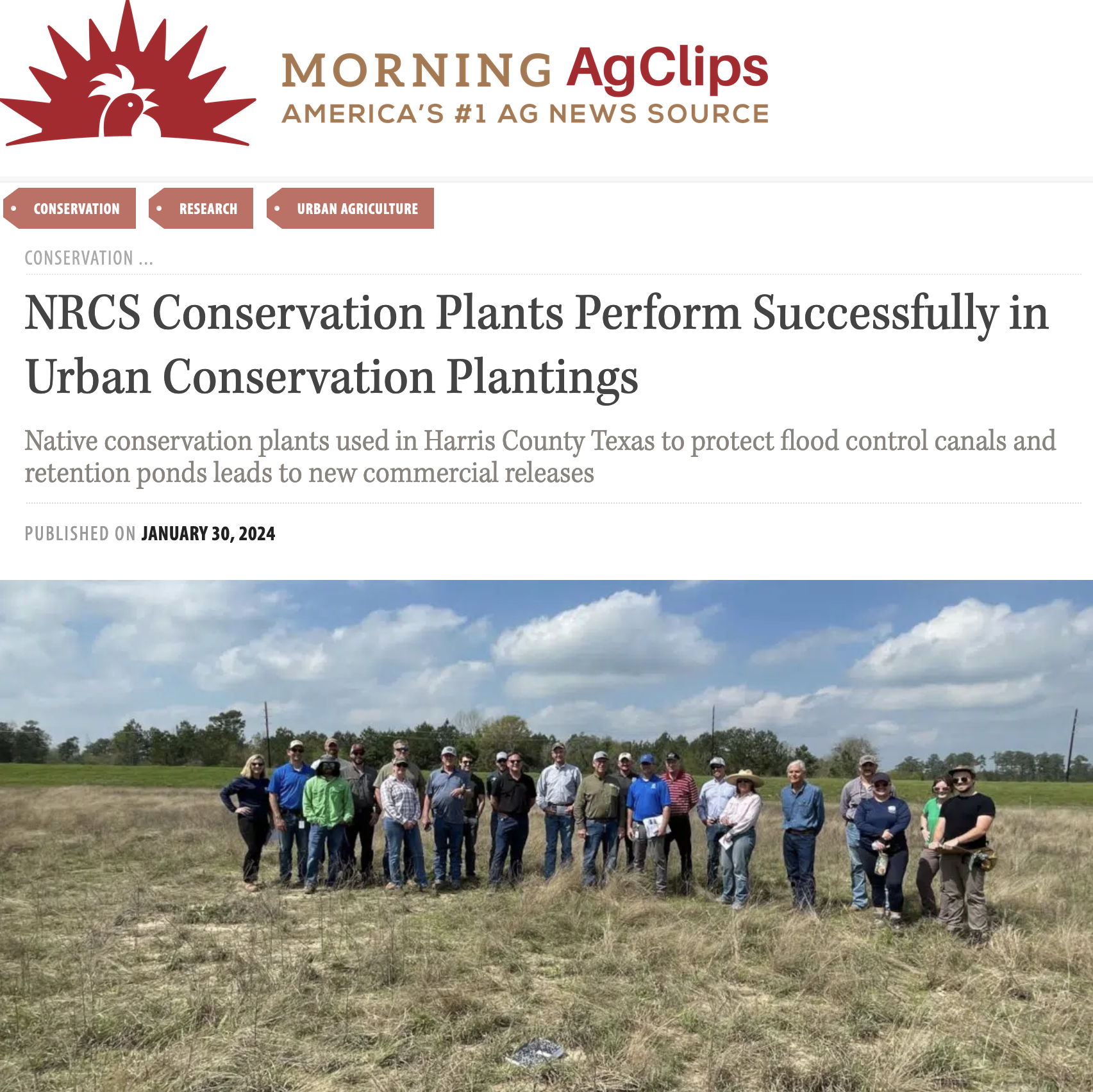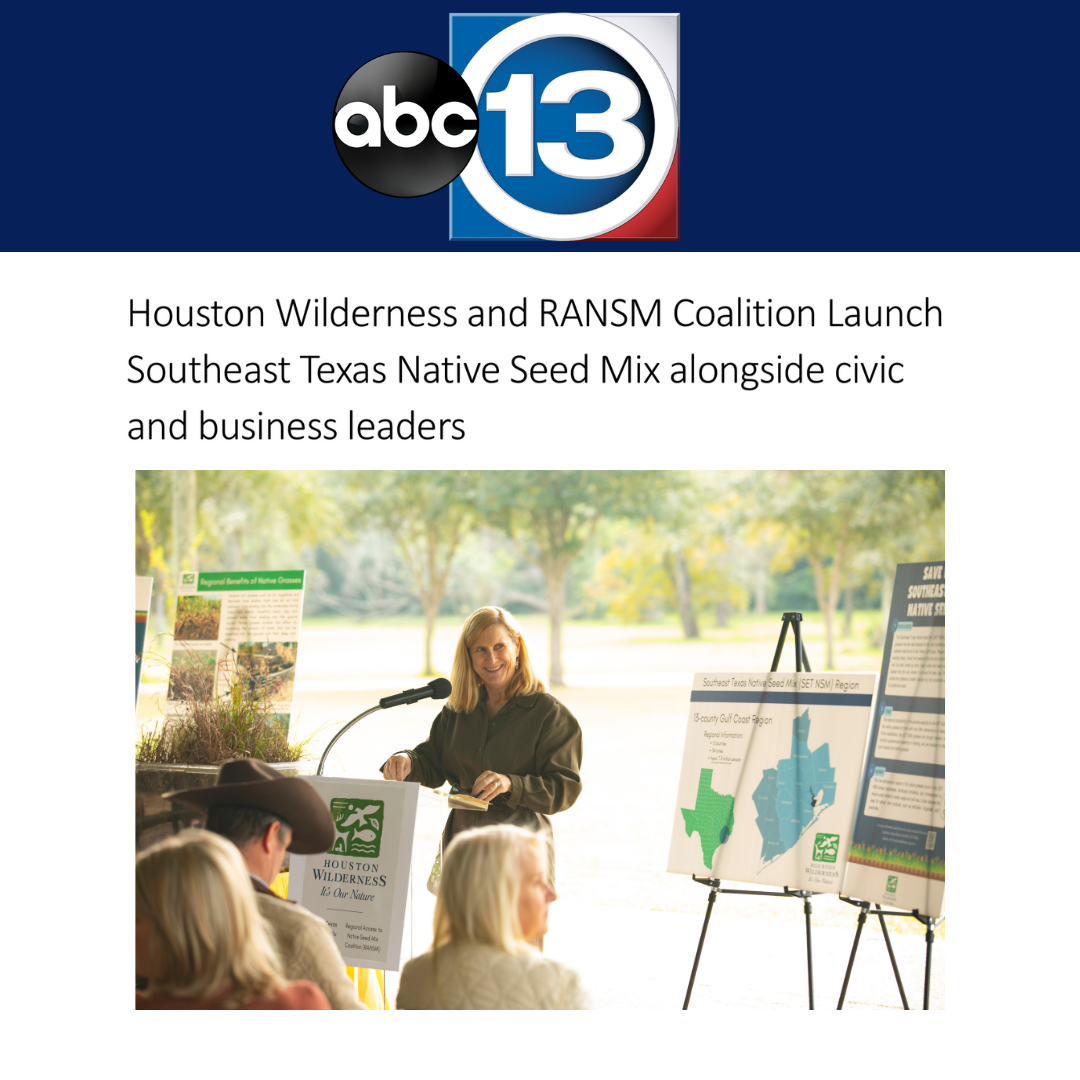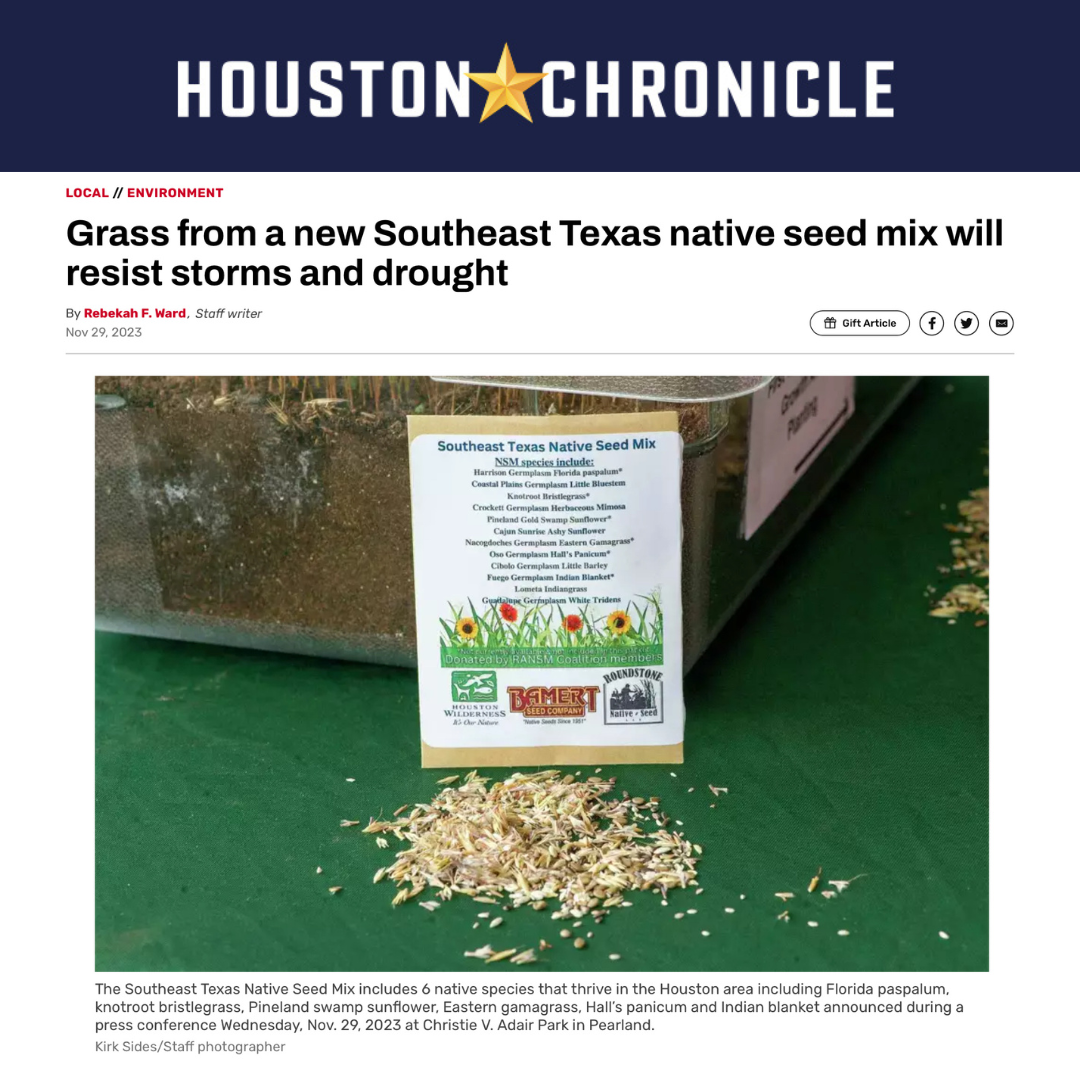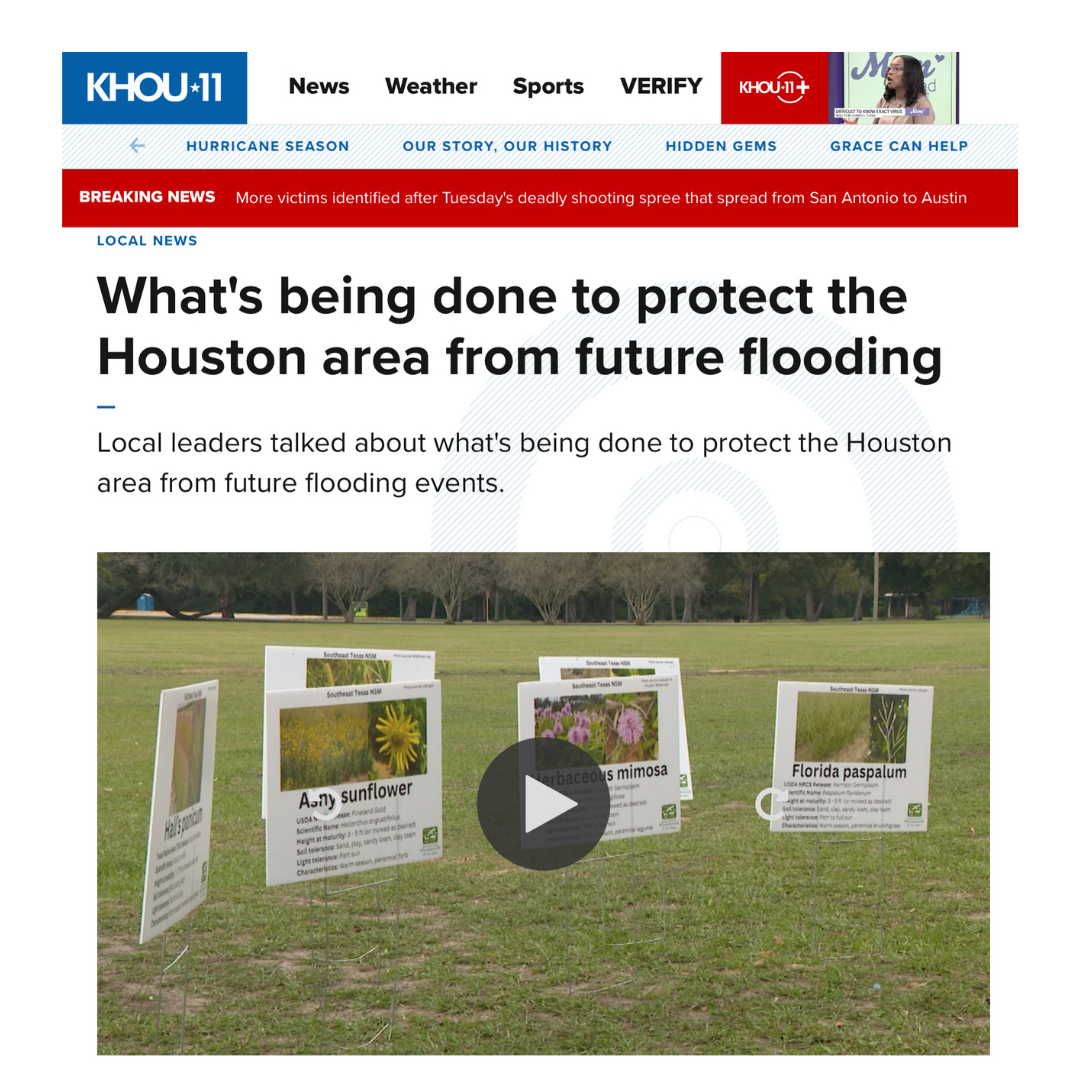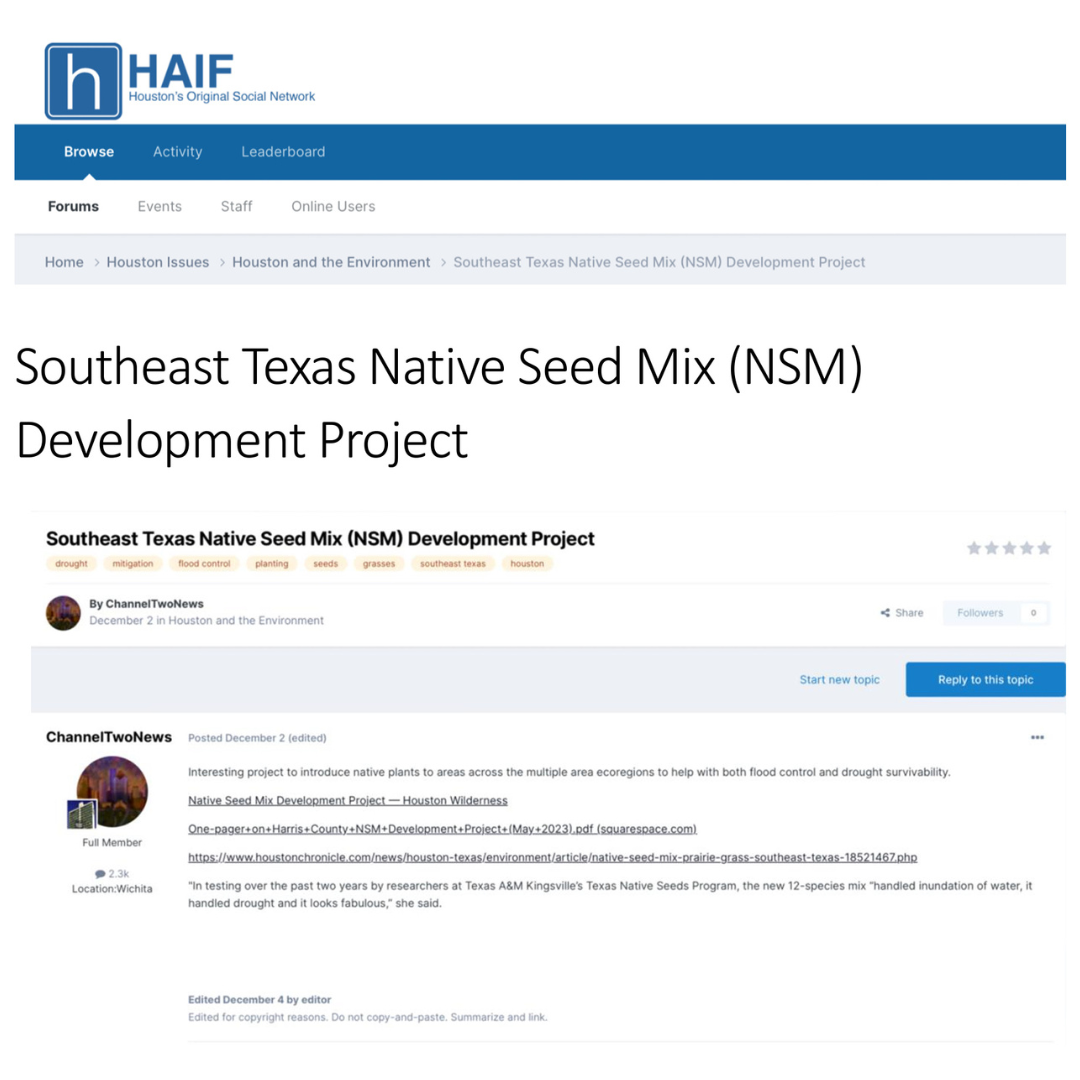Gulf-Houston Regional Conservation Plan
Thank you to Gulf-Houston RCP Sponsors:
ConocoPhillips • Houston-Galveston Area Council • The Clayton Fund • Shell Oil • The Brown Foundation, Inc.
TC Energy Foundation • Allen Boone Humphries Robinson, LLP • The Howard Hughes Corporation • Kirksey
Additional Foundations and Corporate Supporters
Gulf-Houston Regional Conservation Plan (Gulf-Houston RCP) is a long-term collaborative of environmental, business, and governmental entities working together to implement an ecosystem resilience plan for the Eight-County Gulf-Houston region through 3 Key Goals. The 8 counties in the RCP are: Brazoria, Chambers, Galveston, Fort Bend, Harris, Liberty, Montgomery and Waller County.
STATUS OF THE THREE KEY GOALS
(1) 24% by 2040 - Increasing the current 16.0% in protected/preserved land in the eight-county region to 24% of land coverage by 2040
(2) 50% by 2040 - Increasing and supporting the region-wide land management efforts to install nature-based stabilization techniques, such as low-impact development, living shorelines, and bioswales, to 50% of land coverage by 2040, and
(3) 0.4% Annual Carbon Sequestration - providing research and advocacy for an increase of 0.4% annually in air quality offsets through carbon absorption in native soils, plants, trees, and oyster reefs throughout the eight county region.
Gulf-Houston RCP Two-Page Executive Summary
REGIONAL ACTIONS FOR THREE KEY GOALS:
(1) 24% in protected/preserved land by 2040 - See Action One-Pager Here to achieve 24% in protected/preserved land in the 8-county region, and major regional initiatives providing opportunities to add protected/preserved land below.
Texas Coastal Prairie Initiative - for private prairie lands
HGAC Regional Conservation Initiative - for public lands (counties and municipalities)
County and City property buyouts
(2) 50% in Nature-based Stabilization Techniques by 2040 - Action One-Pager Here
Nature-Based Stabilization Techniques (NBS Techniques): Restoring or emulating nature in order to increase human, ecosystem, and infrastructure resilience to climate impacts. Natural infrastructure projects use existing or rebuilt natural landscapes (e.g., forests, floodplains, and wetlands) to increase resilience to climate impacts.
See NBS Techniques Tools: (1) Houston’s Wilderness’ NBS Programs under the Houston Ship Channel TREES Program, the Riverine Targeted-Use-of-Buyouts Program and various regional resources, (2) Houston’s Incentives for Green Development, (3) NOAA’s Green Infrastructure Options to Reduce Flooding, (4) Harris County’s Residential Development and Design Standard Imagination Zones, and (5) FEMA’s Building Community Resilience with Nature-based Solutions for information on green infrastructure practices, considerations for planning and implementation, and estimations on storage potential and costs.
(3) 0.4% Annual Carbon Sequestration - Action One-Pager Here
Reducing carbon emissions is important also, but soil carbon sequestration is a part of the picture. The top priorities are restoring degraded and eroded lands, as well as avoiding deforestation. Major forestation initiatives are taking place in the 8-county RCP area, including a 4.6 million native tree planting goal by 2030 and a Port of Houston TREES Program to plant 1 million trees along the 25 miles of the Houston Ship Channel. See Action One-Pager for more information.
Also, beneath 90% of all trees lies an invisible support system - subterranean fungal partners that form a network of filaments connecting plants and bringing nutrients and water to their roots. In return, the trees provide a steady supply of carbon to the fungi. These hidden partners can shape how ecosystems respond to climate change, and the right fungi partners can help trees survive warmer and drier conditions. Houston Wilderness is working with partners on large-scale native tree plantings that promote these fungi partners, thereby helping native trees survive and substantially increasing carbon sequestration in the region’s soils.
Click here to read our Two-Pager on the soils of the 8-County Gulf-Houston Region












